On the Struggle Against the Marcos Fascist Dictatorship
Today, 21 September 2020, marks the 48th anniversary of the declaration of martial law throughout the Philippines by then President Ferdinand Marcos. In the declaration, he arrogated unto himself absolute powers on the pretext of defeating a Communist Party-led armed rebellion, “saving the Republic, and building a New Society.” Marcos and his wife Imelda, their families, their clique of military generals and favored big bureaucrats and capitalist cronies, thereby ushered in a 14-year fascist dictatorship, which legacies are felt until now.
This is the full-text version of an online talk by Prof. Jose Maria Sison on the Filipino peopleʼs long but victorious struggle against that dictatorship, its social roots, impacts, and lessons for the present and future. The talk was hosted by Edna Becher of Anakbayan-Europa on 20 September 2020. The text is from Prof. Sisonʼs Facebook page, with minor typo corrections by PRISM editors. The video version can be watched on FB Live: https://www.facebook.com/AnakbayanEurope/videos/640771163542075
ON THE STRUGGLE AGAINST THE MARCOS FASCIST DICTATORSHIP
Questions by the Host Edna Becher, Anakbayan-Europa
Answers by Jose Maria Sison
20 September 2020
1. Even before Marcos proclaimed martial law in 1972, revolutionary forces in the Philippines had been waging the national democratic revolution. How big was this movement before Martial law?
JMS: In the entire 1960s, the national democratic movement against US imperialism and the local reactionary classes of big compradors, landlords and bureaucrat capitalists grew steadily among the student youth, workers and peasants through activities to arouse, organize and mobilize them.
The Student Cultural Association of the University of the Philippines (SCAUP) made the first major mass action in the struggle for national democracy when it led 5,000 students on March 15, 1961 to scuttle the anticommunist hearings of the Committee on Anti-Filipino Activities of the Lower House of Congress. Those hearings had persecuted the faculty members and student activists of the UP for writing patriotic and progressive essays.
The leading activists of the SCAUP subsequently generated study groups and seminars to promote the national democratic line of resuming the Philippine revolution among the students, young workers, peasants and professionals. They established the Kabataang Makabayan as a comprehensive youth organization in 1964.
The KM gained national prominence as an articulator and militant force of the national democratic movement in 1964. It worked with student organizations, labor federations of Lapiang Manggagawa and the MASAKA led by Felixberto Olalia. It spearheaded demonstrations that peaked with 25,000 rallyists in 1965 against the treaties, agreements and arrangements that bound the Philippines as a semicolony to the US.
It also led the youth demonstration against the so-called Manila Summit in which US president Lyndon Johnson rounded up the Asian puppet governments to join the US in its war of aggression against Vietnam. The demonstration was violently dispersed but the student demonstrators were inspired to launch the October 24th Movement for carrying out social investigation and recruiting the youth in urban and rural poor communities.
In 1967-68, the KM led nationwide student strikes against reactionary school owners and administrators; and built school chapters nationwide. In 1969, the KM cooperated with jeepney drivers to carry out transport strikes against rising oil prices.
In the meantime, the Communist Party of the Philippines was established under the guidance of Marxism-Leninism with only 12 delegates representing more than 80 full and candidate members. And it soon established the New People’s Army on March 29, 1969 with only a few squads in Tarlac but with a mass base of some 80,000 people.
The First Quarter Storm (FQS) led by the KM broke out in 1970. From January to March, a series of mass protests surged, with 100,000 to 200,000 youth and workers joining each protest action. As a result, the national democratic mass organizations increased their membership by leaps and bounds.
The violent dispersal of the mass actions which resulted in the killing and injury of mass protesters only served to arouse popular outrage, inspire further mass actions, drove many activists to study revolutionary theory and practice and embolden many activists to join the CPP and NPA.
The mass protests continued despite the suspension of the writ of habeas corpus in 1971 until the declaration of martial law in 1972. Against the strident threats of Marcos to declare martial law, the mass protesters shouted people’s war as the answer to martial law.
On the eve of the declaration of martial law, the KM had a membership of 15,000. The revolutionary trade unions reached a membership of at least 30,000 and the peasant mass base was at least 200,000 mainly in Tarlac, Pampanga, Ifugao, Cagayan, Isabela and Nueva Vizcaya provinces in 1972.
The CPP membership was approaching 2,000 and the NPA had morethan 300 Red fighters with automatic rifles, excluding the people’s militia with inferior weapons. Marcos exaggerated the number of NPA fighters as 10,000 in his declaration of martial law.
2. Please tell us about the First Quarter Storm. What were the significant mass actions? What did it achieve?
JMS: Metro Manila was the center of the FQS of 1979 but the mass actions spread nationwide. As I have already said, they ranged in size from 100,000 to 200,000. The storm broke out when Marcos ordered the violent dispersal of the students gathered before Congress after he delivered his state of the nation address on January 26, 1970.
The violent dispersal and the death and injury of the student demonstrators provoked further mass actions. The subsequent mass actions involved having assembly points in various parts of Metro Manila and then the demonstrators marched from those points, picking up more demonstrators and mass support along the way before converging on Congress, the presidential palace or the US embassy.
Following the violent dispersal of the rally before Congress on January 26, 1970, the KM mobilized 150,000 demonstrators to march to the presidential place on January 30. The presidential guards and Marines attacked the demonstrators and the demonstrators captured a fire truck to ram through the gate of the palace. A see-saw battle ensued at the Mendiola bridge, resulting in serious casualties on the side of the students and the reactionary side.
Marcos pleaded to the Movement for a Democratic Philippines (MDP) to stop the mass actions. But the KM decided that the mass movement must go on. The next demonstration in February gathered at Plaza Miranda in Quiapo, Manila and then proceeded to the US Embassy. The demonstrators broke into the gate of the embassy and vented their ire on the entire ground floor of the embassy.
The mass movement proceeded with major issues raised against US imperialism and the Marcos puppet regime. After the FQS, more demonstrations occurred on labor and land reform issues as well as on the US military bases and the US war of aggression against Vietnam until the declaration of martial law in 1972.
3. What was the effect of Martial Law on this national democratic movement?
JMS: The martial law declaration of 1972 served to inflame the revolutionary spirit of the Filipino people. They were outraged that Marcos was imposing fascist dictatorship on them in the service of US imperialism and his own selfish interests, despite his propaganda of saving the republic and building a new society.
Marcos outlawed all the legal forces of the national democratic movement and engaged in the mass arrest of their leaders as well as the leaders of the opposition Liberal Party. The mass activists who could not be arrested went underground. In Metro Manila alone, 4,000 mass activists went underground with the intention of joining the people’s war in the countryside.
The CPP membership leaped to more than 2,000. By 1974, most of the thousands of activists joining the urban underground were deployed nationwide to help build the Party, the NPA, the revolutionary mass organizations, and the local organs of political power in so many regions nationwide.
Instead of being able to destroy the legal national democratic movement, with martial law and fascist dictatorship, Marcos unwittingly succeeded in helping the armed revolutionary movement by driving the mass activists from the ranks of the workers and educated youth to join the the CPP, NPA and the peasant masses in the countryside.
4. What were the different forms of resistance against the Marcos fascist dictatorship?
JMS: Despite the violence and terrorism of martial law, various forms of legal and illegal resistance were possible against the Marcos fascist dictatorship. Only those threatened with arrest, torture and death had to go underground. The civil rights and religious organizations tried their best to defend the human rights of the social activists, the disemployed print and broadcast journalists, the trade unionists and leaders of the conservative opposition.
There was no way Marcos could stop the patriotic and democratic forces among the workers, peasants, students, professionals, religious people and the legal opposition parties who carried on their daily work to express their views and among themselves, especially because Marcos insulted every one by closing all mass media that were not under his control and by trying to monopolize information.
The National Democratic Front of the Philippines was formed on April 24, 1973 to build and strengthen the broad united front against the Marcos fascist dictatorship. This united front was successful in coordinating the legal forms of resistance and the armed revolutionary movement. Anti-fascist publications circulated and lightning protest actions occurred.
Under conditions of martial law, both legal forms of struggle and the peopleʼs war flourished. That was why the Marcos fascist dictatorship was ultimately overthrown. In class terms, the working class as the leading class relied mainly on its basic alliance with the peasant masses, won over the middle social strata and took advantage of the splits among the reactionaries in order to isolate and destroy the power of the Marcos fascist regime.
5. The Bangsa Moro led by the Moro National Liberation Front also waged armed struggle against the Marcos dictatorship. Was there an alliance between the CPP and the MNLF? What was their relationship?
JMS: Nur Misuari and other key leaders of the Moro National Liberation Front got their political education and training from Kabataang Makabayan, which propagated the right of national self-determination among all indigenous peoples in the Philippines. There was therefore a high level of common understanding between the MNLF and the revolutionary movement of the entire Filipino people.
There was at least an objective alliance between the MNLF and the revolutionary movement of the entire Filipino people in fighting the reactionary Manila-based government as the common enemy. The Moro nation’s fight for self-determination had the effect of helping the revolutionary struggle of the entire Filipino people. Reciprocally, the struggle of the Filipino people helped the Moro people.
The CPP and all patriotic and democratic forces succeeded in countering the attempt of Marcos to use Christian chauvinism against the MNLF, the MILF and the Moro nation. The NDFP and the Christians for National Liberation advocated ecumenism and mutual respect between the Christian and Islamic believers. The military minions of Marcos committed atrocities against the Moro people but were condemned by the Filipino people for doing so.
The NDFP and the MNLF agreed to stand together as complainants on behalf of the Filipino and Moro peoples against the Marcos fascist dictatorship as defendant in the trial conducted by the International People’s Tribunal in Antwerp, Belgium in 1980. Marcos and his criminal accomplices were convicted by the International People’s Tribunal.
6. Was there an international support in the movement against the fascist dictatorship? If so, what kind and what was its significance?
JMS: There was abundant international support for the Filipino people and their just struggle against the Marcos fascist dictatorship. As early as 1969, we in the CPP anticipated that Marcos would impose fascist dictatorship on the people. Thus, we started to deploy cadres to conduct solidarity work in socialist countries, in certain countries in Asia, Africa and Latin America, in the US, Europe and in the Asia-Pacific region.
The CPP formed committees and branches in whichever country it had Party members. These engaged in mass work in order to build Filipino community organizations and solidarity organizations with the host people. The NDFP also had its international political work. It was able to form alliances of Filipino organizations and solidarity organizations and develop diplomatic and proto-diplomatic relations with foreign governments and their agencies.
The CPP and the NDFP were open to alliance and cooperation with all Filipino organizations in opposition to the Marcos fascist regime even if they belonged to the conservative opposition. The national democratic organizations abroad were themselves alliances and could include Filipinos of various ideological, religious and political persuasions as long as they agreed to fight against the Marcos fascist dictatorship.
7. The assassination of Aquino in 1983 upon his return to Manila triggered an anti-fascist upsurge. How significant was this in the overthrow of the Marcos fascist dictatorship?
JMS: The Aquino assassination on August 21, 1983 triggered the gigantic mass actions that led to the overthrow of the Marcos fascist dictatorship in 1986. That was the biggest mistake of Marcos. It led to the firm conclusion of the US government that Marcos had become more of a liability than an asset to US interests. The US State Department and the Republican and Democrat parties were offended that Marcos resorted to murder to eliminate a political leader they thought could replace Marcos in a peaceful way.
The Catholic and other Christian churches were also offended. So were most sections of the big comprador and landlord classes that had long been offended by Marcos and his upstart cronies for engaging in flagrant plunder, monopolizing the infrastructure projects and grabbing the enterprises and assets of others.
The Ninoy Aquino funeral was attended by a million people. But the pro-Aquino forces did not have solid mass organizations for launching mass protests. In the interest of the broad united front against the Marcos fascist dictatorship, the forces of the national democratic movement cooperated with the pro-Aquino forces in mobilizing the masses in great numbers to seek justice and effect the overthrow of the Marcos fascist dictatorship.
8. Could you tell us about the EDSA uprising? How did it happen and what effect? How did the regime respond to it?
JMS: The biggest contradiction between the Filipino people and the Marcos fascist dictatorship became conspicuous with the rise of the mass actions after the Aquino assassination from 1983 to 1986 and the electoral rallies of the opposition during the campaign period for the presidential snap election of February 7, 1986.
As a result of the electoral cheating of Marcos through his control of the Comelec, the CPP immediately announced intensified armed resistance. The legal democratic forces also announced the intensification of mass protests. Subsequently, Cory Aquino announced a campaign of civil disobedience and the Catholic bishops issued a pastoral letter proclaiming the Marcos regime as having no legal and moral foundation. The stage was set for unprecedented mass actions against the Marcos fascist regime.
Meanwhile the contradictions between the side of Marcos and General Ver on one side and defense secretary Enrile and General Ramos on the other side broke out into the open. The former side was able to foil the coup attempt of the Reform the AFP Movement (RAM) as the instrument of the latter side. From Camp Aguinaldo, the Enrile-Ramos side and the RAM called for public support before they walked over to Camp Crame. Cardinal Sin called for public support for the beleaguered military opponents of Marcos and Ver.
Using the Radio Veritas broadcast station of the Catholics, Butz Aquino (Ninoy Aquinoʼs brother) called on the people to assemble at the Isetann along EDSA. The forces of BAYAN, Justice for Aquino and Justice for All and Congress for the Restoration and Democracy were the first to appear in significant number. Thus, the great number of people started to build up along EDSA. Colonel Santiago called for volunteers to accompany him in seizing the broadcast station of KPN and the government. And 500 members of BAYAN-Quezon City accompanied him.
The people who occupied EDSA from Cubao, Quezon City to Makati, Rizal peaked to as high as two million people to block the Marcos loyalists from attacking the Enrile-Ramos side. Some 80 per cent of the people responded to the calls of Cardinal Sin, using the Veritas broadcast station. Twenty percent of the people were mobilized by BAYAN. In the direct encirclement of the Malacanang Palace, more than 90 per cent of the 100,000 people were mobilized by Kilusang Mayo Uno and the League of Filipino Students.
Marcos and Ver tried to use force against the Enrile-Ramos side but the gigantic mass of people along EDSA and around the palace was insurmountable. They blocked the army and marine convoys sent out by Marcos from Fort Bonifacio and Sangley Point. At the same time, the US embassy used General Ileto to neutralize the Marcos loyalists in the Philippine Army. He and US ambassador Bosworth remanded the orders of Marcos for the artillery bombardment on Camp Crame from the site of Imelda’s Ministry of Human Settlements. Air Force General Sotelo of Camp Basa Air Base was ordered to bomb Camp Crame but instead he defected to the Enrile-Ramos side.
At the end of his power, Marcos and his family had no choice but to be airlifted by US helicopters to the Clark Air Base and from there to Guam and further on to Hawaii. If Marcos took the road to escape from the palace, he would have been ambushed by one of the special platoons which had been deployed by the NPA in Manila.
9. What was the role of the national democratic movement in the EDSA uprising?
JMS: I have already pointed out the particular role of the forces of the national democratic movement in joining the great number of people at EDSA, in seizing the broadcast facilities of KPN and the government and the encirclement of the presidential palace in the final days of Marcos in power from February 22 to 25, 1986.
I have not yet mentioned many other important contributions of BAYAN, like their organizations in several regions and provinces building the united front against Marcos and persuading the pro-Marcos politicians and units of the AFP and Philippine Constabulary to withdraw support from Marcos.
The regional commander of the PC in Bicol General de Villa cooperated with BAYAN in neutralizing the pro-Marcos politicians in the Bicol region. The BAYAN organizations of Angeles City blocked the way of the convoy of Marcos loyalist troops headed by General Palafox coming from Camp Aquino in Tarlac.
But the biggest role of the national democratic movement in ultimately bringing down the Marcos fascist regime was its long resolute and active resistance in the legal forms of resistance as well as in the form of the people’s war. As the Marcos fascist dictatorship reigned long and had the illusion of ruling forever, the organizations and local organs of political power grew in strength and spread nationwide.
The legal democratic forces were outlawed and had to go underground but they kept on launching lightning protest mass actions and new legal mass organizations also kept on arising, especially after Marcos pretended to lift martial law in 1981. However, as early as 1974 to 1975, the trade unions were able to carry out a nationwide strike in 300 workplaces; and in 1976 the student masses were already able to reestablish student councils in the UP and so many other schools.
The people’s war was inspirational to the broad masses of the people during all the time that Marcos rode roughshod over them with his armed minions and with US imperialist support.
The heroic resistance of the CPP, NPA, the NDFP, the revolutionary mass organizations and the local organs of political power demonstrated to the broad masses of the people that it was possible to fight the fascist regime.
The inspiration of the revolutionary forces became even stronger when the economic, social and political crisis of the fascist regime and the suffering of the people became conspicuous from 1979 onwards. The budgetary and trade deficits were widening and international credit for the regime was tightening.
10. It was a time of social unrest and political instability. Why was the revolutionary movement not able to seize political power from Marcos at that time?
JMS: As of November 1985 when the Plenum of the CPP Central Committee convened, the New People’s Army had already accumulated a total of 5,600 high powered rifles and was already operating nationwide in so many guerrilla fronts, in all rural regions and in the majority of Philippine provinces. That was not a small achievement from having only a few squads with only nine automatic rifles and 26 inferior firearms in 1969. But the strength of the NPA was not yet enough for destroying the armed strength of the enemy and seizing political power in the cities.
The advance of the NPA would have been more rapid if not for the subjectivist line gaining currency within the CPP in 1981 that the Philippines was no longer semifeudal but industrial capitalist and that it was wrong to follow the strategic line of protracted people’s war of availing of the peasantry and the country as the social and physical terrain for maneuvering against the militarily superior enemy and for accumulating armed strength from stage to stage and from phase to phase in every stage.
The subjectivist line led to the Right opportunist line of turning the NDFP into a reformist united front by ending the class leadership of the proletariat supposedly to attract more people to the NDFP. But the worst political errors resulting from the subjectivist line were several “Left” opportunist lines of insurrectionism in several regions at several times. These insurrectionist errors resulted in severe losses of mass base and worse in the commission of crimes when the failure of line became a pretext for the so-called anti-DPA witchhunts. The Second Great Rectification Movement of 1992 to 1998 dealt with and rectified these errors and crimes through ideological and political education.
The Trotskyite urban insurrectionism of Popoy Lagman in the Manila-Rizal region presumed that it was enough for the workers to seize political power in order to win the entire Philippine revolution. And in Mindanao the Reyes-Quimpo Trotskyite Red Area-White Area strategy presumed that peopleʼs strikes so-called and armed city partisan warfare were the lead factor of the armed revolution, with the NPA as secondary factor trying to catch up with the urban actions by rapidly organizing companies in an absolutely vertical way without sufficient horizontal deployment of sufficient armed units for mass work and mass base-building.
11. You were part of this struggle against Marcos dictatorship. Can you share with us your experiences in participating in this struggle?
JMS: I am happy that I was able to contribute what I could to the ideological, political and organizational development of the revolutionary forces that struggled against the Marcos dictatorship. I took part in the development of labor, peasant and youth organizations and alliances during the entire 1960s. These led to the founding and development of the CPP, NPA, NDFP, revolutionary mass organizations and local organs of political power.
I was in the preparation of the revolutionary forces that anticipated the emergence of fascist dictatorship. From 1969 to 1972 I was already involved in the people’s war against the increasing military actions of the Marcos regime against the people and from 1972 to my capture in 1977 I fought what was blatantly a fascist dictatorship. Together with many comrades, I faced the tremendous odds, dangers and risks to life, limb and liberty and became tempered by overcoming them in the course of struggle.
Even while I was under maximum military detention, I continued to fight in the best way I could up to my release after the downfall of Marcos in 1986. I was confident that the revolutionary comrades and the masses outside of prison were doing their best and were advancing the revolutionary struggle according to the founding principles and strategy and tactics already laid.
I was conscious of fighting from inside prison to demonstrate to the people outside that if I could fight under extremely limited conditions they could fight the enemy even more and better. I was never discouraged by the various forms of physical and mental torture inflicted on me. These only strengthened my determination to fight.
Since I went out of prison in 1986, I have continued to be guided by the revolutionary principles and to do the best that I could. I have been able to do ideological, political and organizational work to the best of my ability. By being a refugee abroad for a long time and no longer of the age for military combat, I can share my accumulated knowledge and experience with the people in order to offer lessons that they can study and learn from. Thus, I keep on doing research, writing and participating in study sessions like this webinar.
We should be cognizant of the fact that it is now the task of much younger comrades to take advantage of the ever worsening chronic crisis of the semicolonial and semifeudal ruling system, the nationwide spread of the revolutionary movement and the deep roots of the revolutionary forces among the exploited masses. They can be more daring in the revolutionary struggle and accelerate the offensives for the maturation of the strategic defensive, move into the strategic stalemate and advance to the strategic offensive on time for the unraveling of neoliberalism, the rising tide of the anti-imperialist and democratic struggles and the resurgence of the world proletarian revolution.###
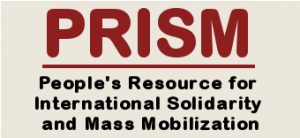
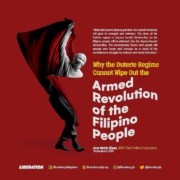
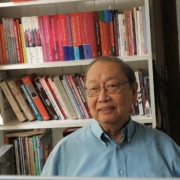
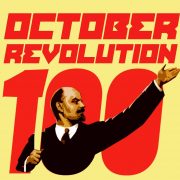
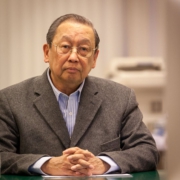
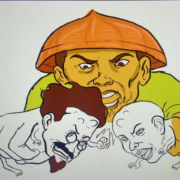


Leave a Reply
Want to join the discussion?Feel free to contribute!